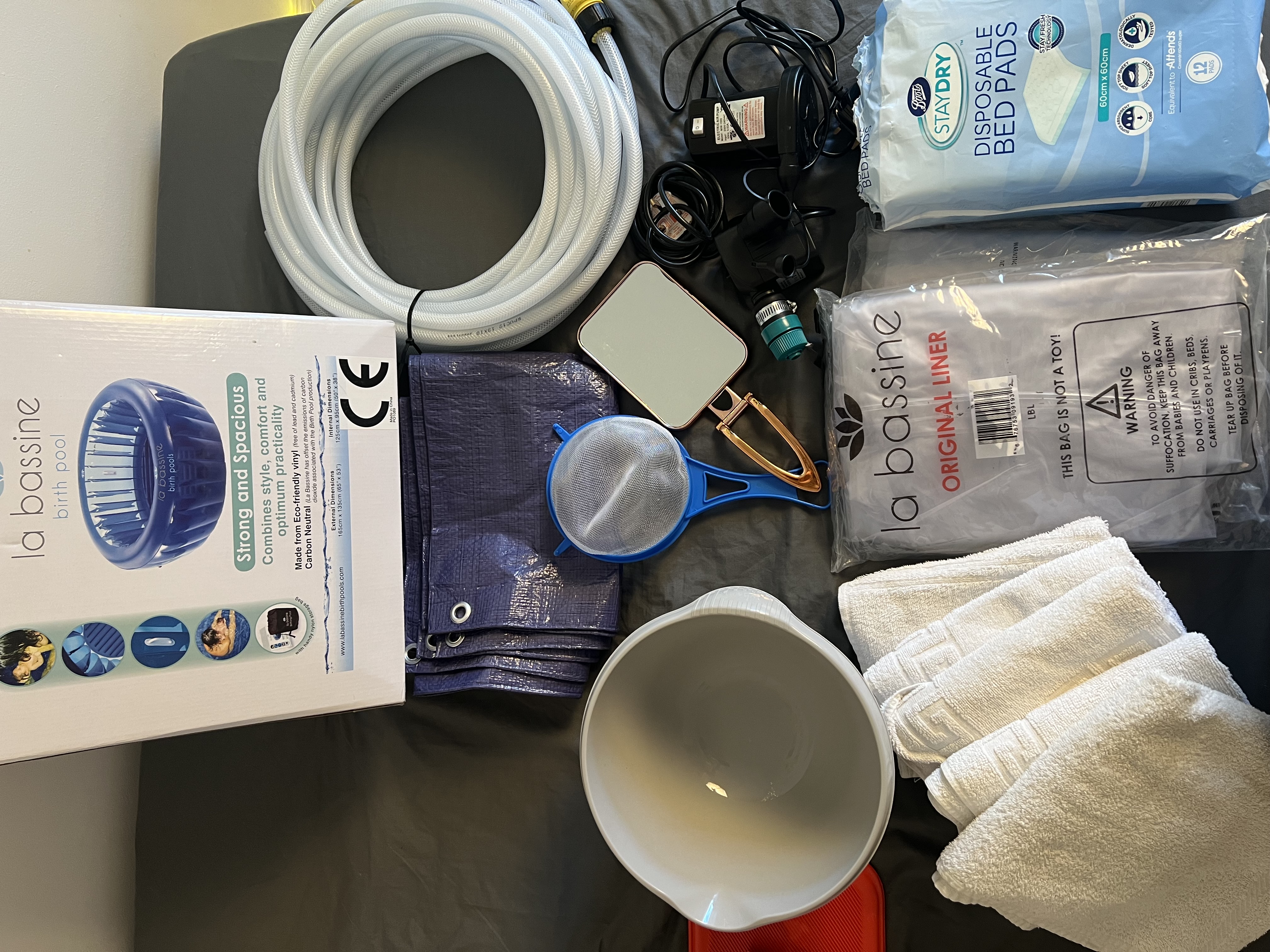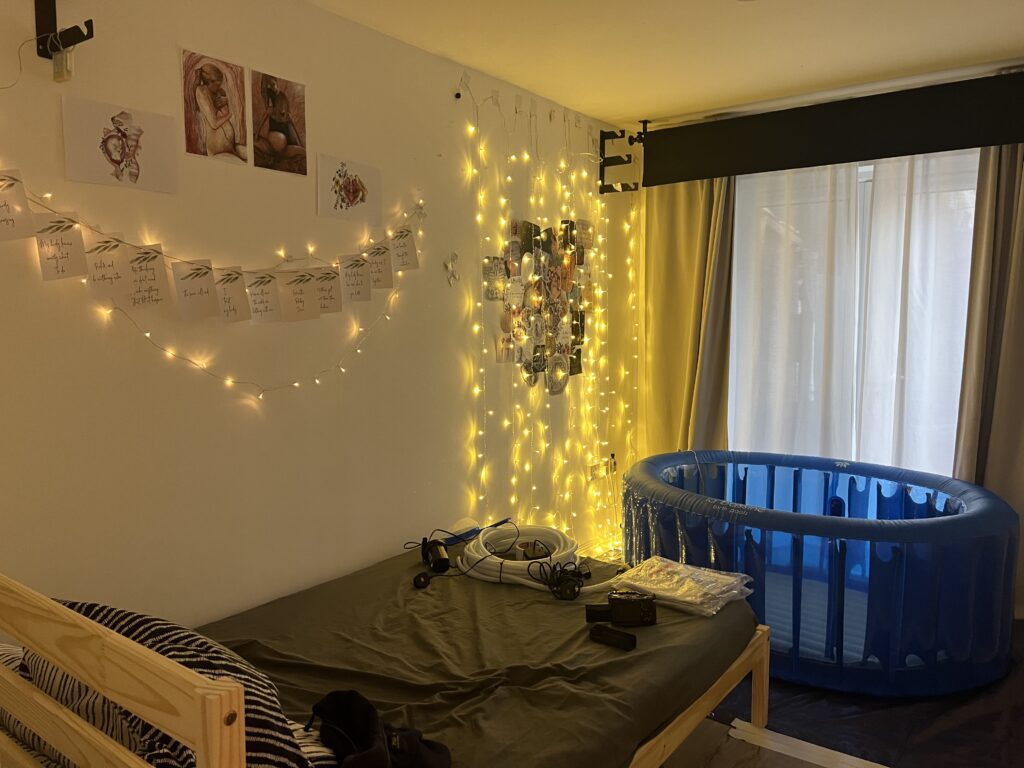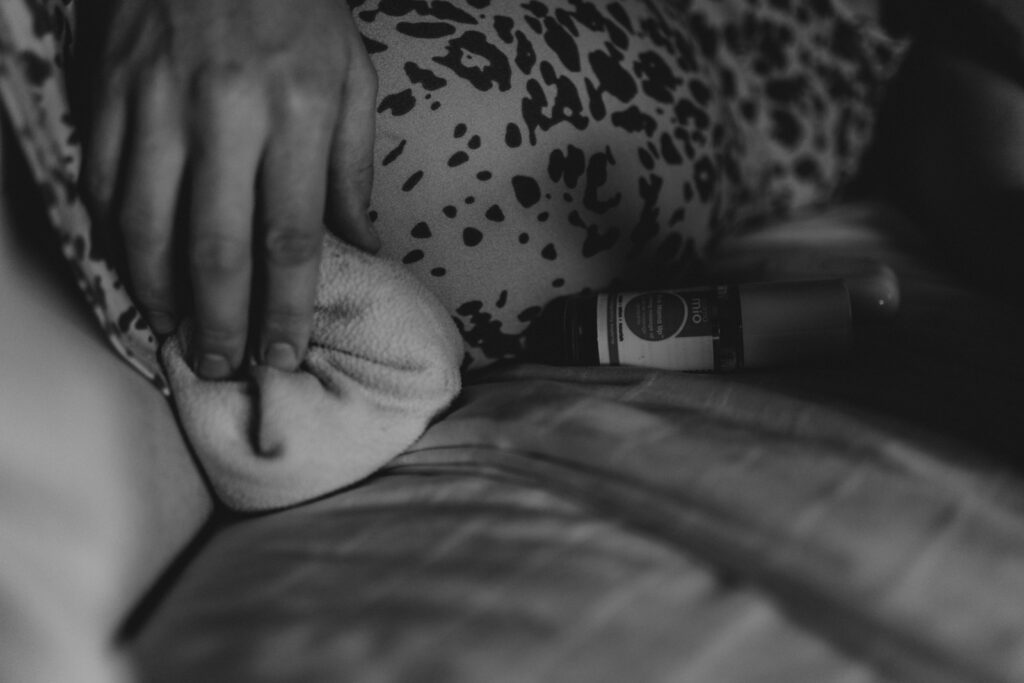
Everything You Need for Empowering Birth
Essential HomeBirth Checklist
Table of Contents
Bringing a baby into the world is one of the most personal and transformative experiences in life, and for many, the decision to have a homebirth is a deeply intentional one. A big part of ensuring a positive and smooth homebirth experience lies in preparation. Whether it’s your first baby or you’re an experienced parent, having the right supplies on hand can help you feel confident and ready for anything.
As a mom who has had two incredible homebirths in the UK, I’ve learned a lot about what’s truly essential and what can be left out. This post isn’t just a generic checklist—it’s a guide drawn from real experiences, practical tips, and the lessons I’ve gathered along the way. I’ll also include recommendations for products that made a real difference for me, links to helpful resources, and even a downloadable checklist to make your preparation as stress-free as possible.
So, whether you’re planning a midwife-attended homebirth or considering a freebirth, this guide will walk you through everything you need—from setting up your birth space to postpartum recovery essentials. Let’s dive in and make sure you’re fully prepared for this incredible journey.
All the Essentials for the Birth Space-Homebirth Checklist
Creating a safe, comfortable, and functional birth space is one of the most important steps in preparing for your homebirth. One of the beauties of having a homebirth is that you can fully customize your environment to suit your needs, making it both personal and practical. Here’s how you can set up your ideal birth space, drawing from my own experience.

Choosing Your Birth Location
For both of my homebirths, I was fortunate to have an extra room in the house with a toilet next to it. Before each birth, we repurposed this space as a dedicated birth room. We decorated it, added a bed, and set up the birth pool, which was an absolute must-have for me. This room was also the only space in the house without carpet, which made cleaning up much easier—a small but significant detail!
If you don’t have a separate room, any comfortable and private space in your home can work. Just make sure it’s easy to clean and has access to water if you plan to use a birth pool.
Essential Supplies for the Birth Space
- Birth Pool (Optional but Highly Recommended): For me, the birth pool was essential. It provided incredible comfort, helped me stay relaxed, and was a natural way to manage labor pain.
- Waterproof Mattress Protectors: Protect surfaces, such as your bed or couch, from potential spills and fluids.
- Towels and Washcloths: Have plenty available for cleaning up, keeping warm, and drying the baby after birth.
- Large Disposable Underpads: Perfect for protecting floors and other surfaces.
- Birthing Stool or Yoga Ball: These are helpful for supporting active labor positions and providing comfort during contractions.
- Bucket or Basin: Useful for managing fluids or waste during labor.
- A Simple Comb for Pain Relief: This is a lesser-known but effective pain management tool. Holding a comb in your hand and gripping it during contractions activates pressure points, which can help redirect your focus and ease pain. It’s a small, inexpensive item that can make a surprising difference.
Lighting and Ambiance
- Set the mood with soft, calming lighting. Options like dimmable lamps, fairy lights, or candles work beautifully.
- Use music or white noise to create a relaxing environment and drown out any distractions.
Planning for the Placenta
The placenta is an incredible part of the birth process, and you may want to honor it in a meaningful way. Some ideas include:
- Encapsulation for postpartum recovery,
- Creating keepsakes such as placenta prints or dried umbilical cord mementos,
- Burying the placenta for a ceremonial or symbolic purpose,
- Using it for smoothies during the early postpartum days for added nutrients.
Except for burying the placenta, I’ve personally tried it all—and let me tell you, it’s incredibly special. Especially last time, when I created keepsakes with our boys. Seeing their excitement and involvement made the experience even more memorable and meaningful. If this interests you, make sure to plan ahead and have a clean container, ice packs, or a preservation kit ready. I’ll also link some of my articles about placenta options for more ideas and guidance.
Medical Supplies for HomeBirth
When preparing for a homebirth, thinking through the medical supplies you might need is essential. In the UK, midwives attending homebirths typically bring all the necessary medical tools and equipment. However, being prepared for unexpected scenarios, such as midwives being unable to attend your birth and choosing to proceed with a freebirth, is always wise. Having a well-thought-out collection of medical supplies can provide reassurance and empower you to handle various situations with confidence.
What Midwives Typically Provide
- Midwives usually bring everything required for the medical aspects of birth, such as sterile gloves, cord clamps, scissors, and even emergency medications.
- They monitor both mom and baby throughout labor, checking vital signs and ensuring everything progresses smoothly.
Preparing for Freebirth Scenarios
While I never planned for a freebirth, I always ensured I had a basic set of medical supplies on hand—although I would if I ever found myself having another baby (most probably not going to happen, haha). Having these supplies gave me peace of mind and confidence, knowing I was ready to handle any situation. Here are the essentials I kept:
- Sterile Gloves: Crucial for maintaining hygiene during delivery.
- Cord Clamps or Umbilical Tie: I highly recommend using an umbilical tie—it’s softer, more comfortable for the baby, and less likely to irritate the skin.
- Sterile Scissors: For cutting the cord if necessary.
- First Aid Supplies: Including gauze, antiseptic wipes, and alcohol prep pads to handle minor injuries or issues.
- Thermometer: Useful for monitoring mom and baby’s temperatures postpartum.
Additional Supplies for Emergencies
For added preparation, consider these items for rare but critical situations:
- Blood Pressure Monitor: To check for signs of preeclampsia or other complications during or after labor.
- Doppler or Fetoscope: To monitor the baby’s heart rate if midwives are unavailable.
- Resuscitation Mask or Bulb Syringe: To assist in clearing the baby’s airways, should the need arise.
- Emergency Birth Kit: These can be purchased as pre-packaged sets and include many essentials in one convenient package.
Hygiene and Sterilization
Maintaining a clean and sterile environment is especially important in a midwife-free scenario. Consider adding:
- Sterilizing Equipment: For tools like scissors, simple methods like boiling water or sterilization tablets can be handy.
- Sanitation Supplies: Hand sanitizer, disposable face masks, and protective aprons to minimize risks of infection.
Postpartum Supplies for Medical and Recovery Needs
Preparation doesn’t end with the birth itself—postpartum care is just as critical. Some helpful supplies include:
- Blood Loss Monitoring Tools: Heavy-duty postpartum pads or adult diapers can help track bleeding and ensure recovery is progressing well.
- Placenta Delivery Assistance Tools: In rare cases where the placenta doesn’t deliver naturally, a sterile cord traction kit could be useful.
Knowledge and Training Resources
In addition to supplies, having the right knowledge is invaluable:
- Books and Guides: Consider reading trusted resources on freebirth or homebirth that provide step-by-step guidance.
- First Aid Training: A basic first aid or birth-focused course can equip you with confidence to handle emergencies.
Personal Insights and Reflections
For both of my homebirths, I prepared this medical kit even though I planned for midwives to attend—not everything, though. Having even just a few key supplies gave me a sense of empowerment and eased my anxiety, knowing I was ready to face any situation. Preparing thoughtfully for all possibilities helped me feel more in control, and I highly recommend others do the same.
Comfort and Support Items
Labor is an intense experience, and having the right comfort and support items can make all the difference. Creating a space that promotes relaxation and focus allows you to navigate contractions with greater ease. Here’s what worked for me during my homebirths, including personal touches and must-have tools.

Creating a Comfortable Environment
Your environment plays a key role in how you experience labor. These are the items I found invaluable:
- Pillows and Cushions: These are great for supporting various labor positions and keeping you comfortable through contractions.
- Birth Pool (if using): For both of my homebirths, I used the La Bassine Birth Pool. It was an absolute game-changer, providing immense relief, helping me relax, and making the labor process feel much more manageable. The first time, I had the Maxi version, which was very spacious. The second time, I used the Original, which was still a decent size and comfortably accommodated me. At one point, both of my boys were next to me in the pool, making it such a heartwarming and special memory.
- Heat Packs or TENS Machine: Both are fantastic for managing back pain or tension during labor. I had a heat pack filled with lavender, and it was so soothing—not just for the warmth but for the calming scent it released.
- A Simple Comb: A lesser-known but incredibly effective tool, gripping a comb during contractions activates pressure points in your hand, redirecting focus and helping to alleviate discomfort. I used it both times, and it’s one of those little things that makes a big difference.
- Aromatherapy Oils and Diffuser: While clary sage is commonly used during labor, I preferred not to interrupt the natural process with it. Instead, I loved frankincense for grounding and relaxation and bergamot for its uplifting and calming properties.
Lighting and Ambiance
- Soft, dim lighting can create a tranquil and focused atmosphere. Options like dimmable lamps, fairy lights, or candles can help set the mood.
- Music or white noise can further enhance the ambiance. A playlist of soothing tunes or nature sounds is a great way to stay calm and centered.
Snacks and Hydration for Energy
Labor is hard work, and keeping your energy levels up is crucial. Having the right snacks and drinks on hand can make a big difference:
- Favorite Snacks: My go-to snacks were dates filled with peanut butter and homemade energy balls, which I kept ready in the fridge. These were easy to eat and packed a punch of energy.
- Hydration: Staying hydrated is just as important. I had water, coconut water, and an electrolyte drink nearby, but the real game-changer for me was snacking on watermelon. It gave me energy and hydration without requiring effort—perfect for labor.
Support People and Tools
Having the right support system can make all the difference:
- Birth Partner: Whether it’s your partner, a friend, or a doula, emotional and physical support during labor is invaluable. For me, my sister and husband made up the team I needed. Last time, even our eldest joined in, making sure I had water and asking if I was okay. Having their support was heartwarming and incredibly empowering.
- Small Handheld Electric Fan: If you’re using a birth pool or find yourself getting warm, a small electric fan can be a game-changer. It’s such a simple item but can bring immense relief.
Personal Touches
Making the birth space your own can add a layer of comfort and positivity:
- My favorite decorations were the little salt dough hanging ornaments we made together with our boys. We also hung up pictures of our family, which added a beautiful and personal touch to the space.
- I discovered a Hungarian artist who creates illustrated affirmation cards for every stage of motherhood, as well as for kids and dads (Modern Goddess Cards). These cards were beautiful and empowering.
- I also bought other affirmation cards from Etsy, printed illustrations I found online, and even used Instagram for inspiration. Using these, I created a canvas of affirmations and illustrations to make my space feel intentional and encouraging.
Having these small, meaningful touches around me during labor helped create a space that felt uniquely mine—both grounding and empowering for the journey ahead.
Supplies for the Baby
Welcoming your baby into the world is the most magical moment, and having the right supplies ready can make those first few hours and days even more special. Preparing for your newborn ensures you can focus on bonding and enjoying those precious early moments without stress.
Essentials for the Baby
Here are the key items you’ll need:
- Newborn Diapers and Clothing: With my first baby, we used Close Pop-in nappies, which were reusable and worked beautifully at the time. By my second baby, I started mixing reusable nappies with disposables, and I noticed a clear difference between them. By the time my third baby arrived, I knew I didn’t have it in me to handle washable nappies with home education, work, and everything else going on. I wanted something that was gentle on my baby’s skin and free from harsh chemicals, so I decided on Eco by Naty diapers. It was the best decision—they were kind to my baby’s skin and aligned with my values for gentler, eco-friendly products.
- Swaddle Blankets and Hats: Swaddle blankets help your baby feel secure and cozy, while hats are perfect for keeping them warm right after birth.
- Clean Towels: Keep a few clean, soft towels on hand for immediate skin-to-skin contact and drying your baby after their first wipe-down.
- A Baby Scale (Optional): If you’d like to monitor your baby’s weight at home, a baby scale can be a helpful tool, though it’s not essential.
- Umbilical Tie: I highly recommend using an umbilical tie instead of traditional clamps. It’s softer, more comfortable for the baby, and feels gentler overall. I used them for all of my babies and loved how much easier and kinder they felt compared to standard clamps.
Planning for the Placenta
The placenta is an extraordinary part of the birth process, and there are so many ways to honor it. If you have plans for your placenta, think about what you’ll need to prepare ahead of time. Some ideas include:
- Encapsulation: To support postpartum recovery.
- Keepsakes: Create beautiful placenta prints or preserve the umbilical cord as a special memento.
- Burying the Placenta: A ceremonial or symbolic act many families choose to do.
- Smoothies or Other Uses: Using the placenta for nutrient-rich smoothies in the early postpartum days.
I’ve personally done everything on this list except for burying the placenta. Let me tell you, creating keepsakes with the boys was such a special experience, especially the last time. They were so curious and involved, and it made the entire process even more meaningful.
If you’re curious about the incredible benefits of honoring your placenta or want to learn more about this wonderful organ, be sure to check out my posts: Unlock the Incredible Benefits: Empower Your Journey with Placenta Insights and My Placenta Journey: What Every Mom Should Know About This Wonderful Organ for a deeper dive into its potential and how to incorporate it into your postpartum journey.
Personal Touches
Your baby’s arrival is such a personal and beautiful moment. Think about adding a few special touches to your setup to make it even more memorable:
- Keep your baby’s first outfit or blanket ready for photos.
- Consider creating a little keepsake station for things like the umbilical cord tie, their first diaper, or a footprint.
Capture the Moment: Record and Photograph Your Birth
Even if you’re not a professional photographer or videographer, I strongly recommend investing in a tripod and using your phone to record your birth. Ask your partner, doula, or even a family member to take photos throughout the experience. You’ll thank your present self for capturing those raw, beautiful moments.
I cry every time I watch my birth videos or look at the photos. They’re a priceless reminder of the strength, love, and connection that filled those hours. Even simple, candid footage can mean the world later on, so don’t hesitate to press record—you’ll never regret it.
Personal Touches
Your baby’s arrival is such a personal and beautiful moment. Think about adding a few special touches to your setup to make it even more memorable:
- Keep your baby’s first outfit or blanket ready for photos.
- Consider creating a little keepsake station for things like the umbilical cord tie, their first diaper, or a footprint.
Postpartum Essentials for Mom
The postpartum period is a time for healing and bonding, and having the right supplies can make a big difference in how comfortable and supported you feel. Based on my experience, here’s a list of essentials to help you recover smoothly and navigate those precious early days.
Postpartum Recovery Must-Haves
- Frida Mom Peri Bottle: This was a lifesaver for me! It’s designed to make cleaning up after birth easy and gentle, especially if you’ve had tearing or stitches.
- DIY Padsicles: I made my own padsicles using aloe vera, witch hazel, and lavender oil. They were incredibly soothing and a must for postpartum recovery. I’ve shared the full recipe if you’d like to try them yourself.
- Comfortable Postpartum Clothing: Loose, breathable clothing like nursing-friendly pajamas or dresses can make a world of difference.
- Heavy-Duty Pads or Adult Diapers: These are essential for the first few days postpartum when bleeding is heaviest.
- Stocked Fridge and Freezer: Having hearty, pre-made meals on hand is a huge help. After my second and third births, I made sure to stock up on soups, stews, and easy-to-heat meals. You’ll thank yourself later!
Breastfeeding Support Essentials
Breastfeeding can be a rewarding journey, but it often comes with challenges. Here’s what helped me:
- Nursing Pads and Nipple Cream: These are essential for dealing with leaks and soothing sore nipples in the early days.
- Medela Breast Pumps: Over the years, I’ve used three different Medela pumps, including their hospital-grade pump, the Haakaa, and now their Flexi and Hands-Free pumps (link to pumps). These newer pumps have been game-changers, especially the hands-free model, which allowed me to pump while multitasking—perfect for a busy mom balancing home education and work.
- Medela Supplemental Nursing System (SNS): This product truly saved my breastfeeding journey. After struggling to exclusively breastfeed, the SNS allowed me to provide supplementary milk while keeping my baby at the breast. It extended my breastfeeding journey to nearly three years with one baby, and I’m still breastfeeding my third. I think more moms need to know about this incredible tool—it was a game-changer for us.
Additional Essentials
- Sitz Bath Setup: A sitz bath can help soothe and heal perineal soreness. You can use herbal mixes or just warm water.
- Herbal Teas: Postpartum teas can support recovery and boost milk supply. I loved blends with fenugreek, fennel, and nettle.
- Hydration Tools: Keep a large water bottle or tumbler nearby to stay hydrated, especially while breastfeeding.
Lessons Learned
The postpartum period taught me that preparation is key, but flexibility is just as important. By my third baby, I had a better sense of what worked for me. I realized that while determination is essential, having the right tools and support is what truly makes the journey smoother. Breastfeeding, for example, wasn’t just about willpower—it was about using resources like the Medela SNS and reaching out for help when needed.
FAQ
What is a home birth checklist and why is it important?
A home birth checklist is a comprehensive list of items and preparations needed for a smooth and safe home birth. It is crucial because it helps ensure that all necessary home birth supplies are readily available, reducing stress during labour and allowing for a more tranquil birth experience. By preparing in advance, you can focus on the birthing process instead of scrambling for essentials when the time comes.
What items should be included in a basic home birth checklist?
A basic checklist for home birth typically includes items such as a birthing pool or pool for a water birth, towels, pads, a blanket for the newborn, and a gown for the birthing person. Additionally, you’ll need lighting options, a birth plan, and postpartum items like a clean bin for medical waste and supplies for the midwife or doula. Having these essentials prepared ahead of time can make a significant difference in your labour process.
How can I prepare for a home birth?
To prepare for a home birth, start by creating a detailed home birth checklist that includes all necessary supplies and equipment. You should also discuss your birth plan with your midwife or doula to ensure everyone is on the same page. Additionally, consider setting up your birthing space with soft lighting, a comfortable pillow, and any relaxation aids such as a spray for aromatherapy. It’s also beneficial to gather any necessary postpartum items, ensuring you have everything you need for both the labour and recovery phases.
What is a birth kit and what should it contain?
A birth kit is a collection of essential supplies for a safe and clean home birth. It typically includes items like waterproof sheets, sterile gloves, cord clamps or ties, scissors, gauze pads, a bulb syringe, heavy-duty postpartum pads, and comfort tools like heat packs or essential oils. Optional items can include a birth pool, placenta storage supplies, and a peri bottle for postpartum care. It’s designed to ensure you have everything you need for labor, delivery, and immediate postpartum recovery.
What is a home birth and how does it differ from a hospital birth?
A home birth is a type of childbirth that takes place in the comfort of your own home rather than in a hospital or birthing center. This option allows you to have a more personalized and intimate experience, often with the support of a midwife or doula. The main difference between home birth and hospital birth is the environment; home births are typically more relaxed and can be tailored to your preferences, while hospital births follow standard medical protocols and may involve more medical interventions.
What should be included in a home birth checklist?
Your home birth checklist should include all the essential supplies you’ll need for a calm labour and birthing experience. This includes items like a birth pool or pool for a water birth, towels for drying the baby after birth, and a blanket for warmth. You should also prepare items for postpartum care, such as pads and a gown for yourself. Don’t forget to have your birth plan accessible and ensure that your midwife will provide any additional necessary supplies.
How do I prepare for a home birth?
To prepare for a home birth, start by creating a comprehensive checklist of all the items you’ll need during labour and after giving birth. This includes essentials like a birth kit, towels, a birth pool if you’re planning a water birth, and a bin for disposal of any waste. It’s also important to set up your birthing space with soft lighting and curtains to create a calming environment. Discuss your birth plan with your midwife and ensure everyone on your birth team understands their roles.
What are the benefits of having a midwife at a home birth?
A midwife brings extensive knowledge and experience in midwifery to the home birth setting. They provide continuous support throughout labour and birth, help manage pain and monitor both the mother and baby’s well-being to ensure safety. A midwife can identify and address complications early, reducing risks and providing peace of mind. They are skilled in creating a calm and empowering environment, offering guidance, reassurance, and practical care tailored to the birthing person’s needs. Having a midwife present at a home birth combines the comfort of being at home with professional medical expertise.
What is a home birth and why choose it?
A home birth is a planned birth that takes place in the comfort of your own home, usually attended by a qualified midwife or a doula. Many families choose this option for a variety of reasons, including the desire for a more personal and intimate birth experience, the comfort of familiar surroundings, and the opportunity to have more control over the birth process. It can also be a way to minimize interventions and avoid the clinical environment of a hospital. In addition, birthing at home allows families to create a birth plan that aligns with their values and preferences.
What should be included in a home birth checklist?
A comprehensive home birth checklist should include all the necessary supplies and preparations to ensure a safe and calm labour. Essential items might include a birth kit, which typically contains pads, towels, a sheet, and items for the newborn like a blanket and clothing. You should also have a birth pool or pool prepared for a water birth if that’s your plan. Don’t forget items for pain relief, lighting such as soft lighting or curtains to create a calming atmosphere, and a bin for disposal of used items.



